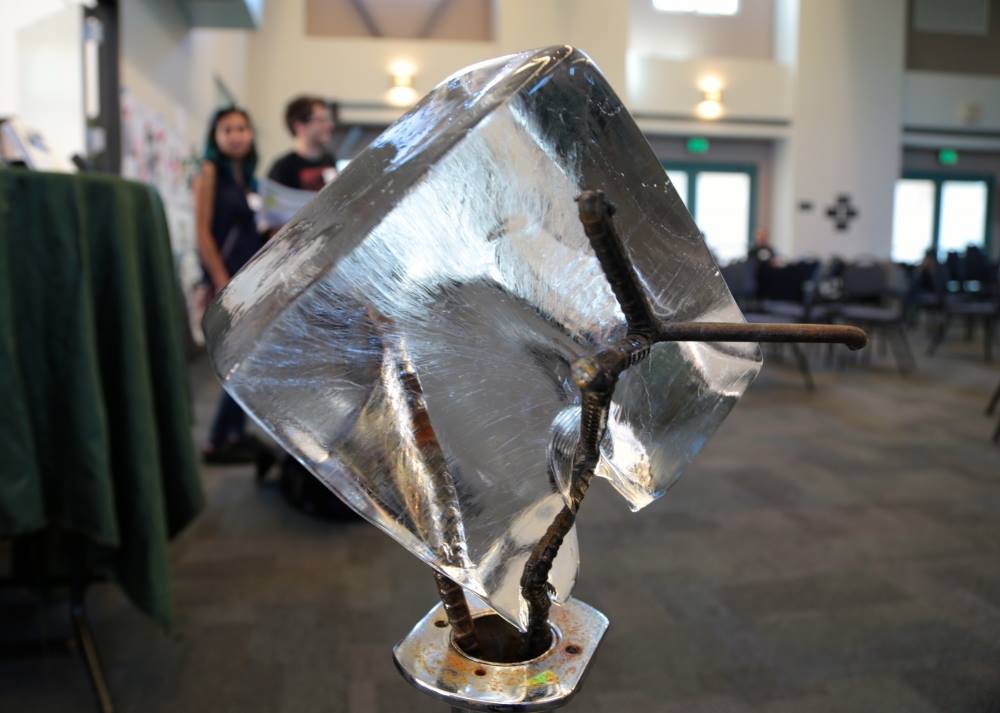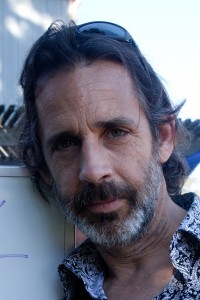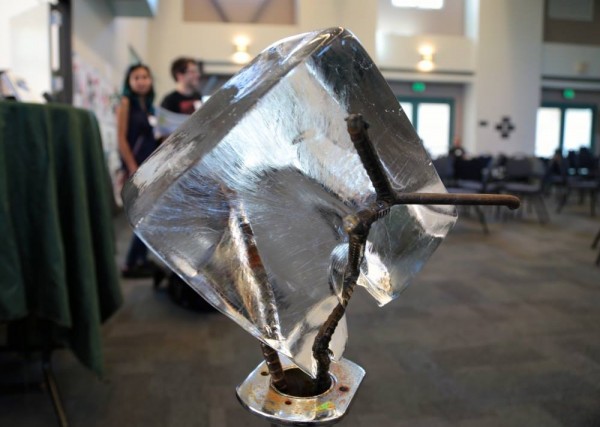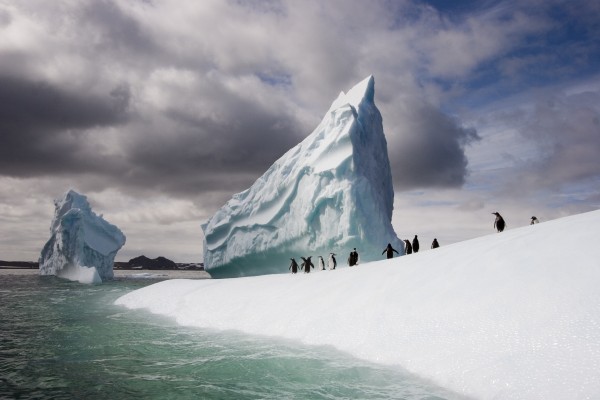
19 May Mountainfilm in Telluride: Carter Brooks’ Ice Installations at Gallery Walk
At Mountainfilm’s Gallery Walk, the official launch of the festival weekend, you will not find Carter Brooks’ art indoors at the usual venues, where the tribe is happily re-engaging over free drinks and hors d’oeuvres.
Carter Brooks’ opening will be outdoors, under the tree outside the Masons (just across a patch of green opposite Telluride Bistro) and, relatively speaking, cold. Very cold. Ice cold.
For Mountainfilm 2014, Brooks, a self-described “climate artist,” is creating a work of art using large blocks of ice melting over metal.
Why has the artist chosen to use ice as his medium?
Because, he explains,“Ice is an engaging, living and changing aesthetic. Ice carves itself as it melts into metal of various shapes as people interact with it. And ice is a reminder of the ongoing melting of glaciers in the face of global climate change.”
Based on that statement, some might say Brooks’ installations are surrogates for words, seductive reminders of the increasingly alarming news about global warming and, at the same time and somewhat paradoxically, a means of keeping the conversation, which is itself heating up, in the spotlight.
Brooks does not say that at all. Tongue firmly planted in cheek (?), he says he chose ice simply because ‘It’s just cool to see how it melts. It’s fun.”
At the same time he asks, again somewhat ironically: “Who will cry for the ice?”
Whatever Brooks is really up to, the darkening impacts of climate change made major headlines last week.
In UK’s Daily Mail online, John O Callaghan said this:
Vast glaciers in West Antarctica seem to be locked in an irreversible thaw linked to global warming that may push up sea levels for centuries, according to scientists.
In a few hundred years they say the irreversible melt that has already started could eventually add four to 12 feet (1.2 to 3.7 meters) to current sea levels.
A NASA study looking at 40 years of ground, airplane and satellite data of what researchers call ‘the weak underbelly of West Antarctica’ shows the melt is happening faster than scientists had predicted, crossing a critical threshold that has begun a domino-like process.
Evidence shows ‘a large sector of the West Antarctic ice sheet has gone into a state of irreversible retreat’, says lead author Eric Rignot of the University of California, Irvine, and Nasa’s Jet Propulsion Laboratory in Pasadena, California.
The coastal ends of the glaciers rest on bedrock below sea level, holding back a vast weight of ice and making them vulnerable to melt, he said.
“It does seem to be happening quickly,’ says University of Washington glaciologist Ian Joughin, lead author of a separate study into the same phenomenon…
Continue reading here.
At the exact same time, the media was popping with stories featuring representatives of an advisory group of retired U.S. military leadership, who lined up like good soldiers do to make the point that climate change could well cause conflict in the Arctic and definitely represents a serious and growing threat to world security because the region is so resources-rich.
Brooks’ activism – or not – dates back to the turn of the new millennium, the year 2000, when his daughter was born. Back then, a scientific report forecast that the polar ice cap would disappear by the time she reached her grandmother’s age. While environmentalists began to fret about the future, Brooks found himself compelled to discover meaning from the sobering inevitability.
Then and there the artist, entrepreneur and self-proclaimed climate geek made the rash decision to devote the rest of his life and professional career to understanding the ramifications of what he read, particularly its implications for future generations.
In the late-1990s, Brooks’ brother Cameron was assistant director on Mountainfilm and he attended regularly.
“So I’m excited to be returning after more than a decade’s hiatus, and it is fortuitous that the word in the air this year is ‘wilderness.’”Cameron wrote his senior college paper on the Wilderness Act, perhaps inspired by the class we both took my senior year with the legendary philosopher-turned-environmental historian Bill Cronon. Cronon taught us how our mental concept of wilderness and nature affected how we manifest ourselves on the landscape, whether we were conscious of them or not. The year was 1988, and climate change wasn’t yet on my radar. In fact, it was just stepping onto the public stage…”
For more, click the “play” button and listen to my conversation with Carter Brooks.





Sorry, the comment form is closed at this time.